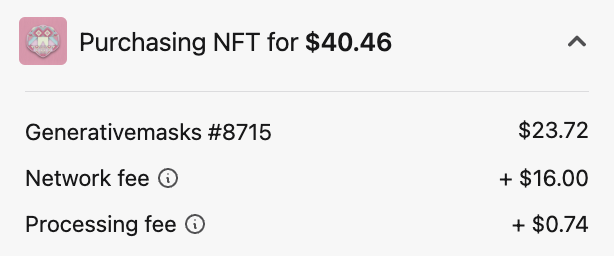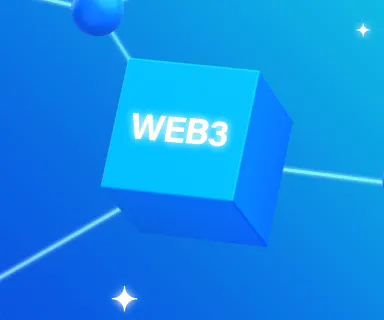
In order to buy an NFT, you'll need a crypto wallet and cryptocurrency (or, in some cases, just a credit or debit card). Using OpenSea, you can buy items listed for sale instantly, bid in auctions, or make offers on any NFTs.
What is an NFT?
An NFT (non-fungible token) is a unique digital item stored on a blockchain. NFTs can represent almost anything, from art, to memberships, to in-game items, and serve as a digital record of ownership.
NFTs operate on blockchain technology. The blockchain is basically a large, digital, public record. The most popular blockchains are distributed across many nodes (read: people’s computers), which is why you’ll hear them described as “decentralized.”
So instead of a central company-owned server, the blockchain is distributed across a peer-to-peer network. Because the blockchain records and preserves history, it is uniquely positioned to transform provable authenticity and digital ownership.
When someone creates, transfers, buys, sells, or otherwise does something with an NFT, that all gets recorded on the blockchain. This is what enables authentication.
This record serves as a permanent statement of authenticity that can be viewed or accessed by anyone. Today, when you buy a piece of art or a collector's item, it typically comes with a paper certificate of authenticity, which you must then keep track of forever. It is easily forgotten, lost or destroyed, creating a very fragile system for authenticity. Blockchain’s offer a simple and more secure solution to this long standing issue of proving authenticity
What do you need in order to buy an NFT?
To buy NFTs, you’ll need to set up a crypto wallet. A crypto wallet is a program that stores your NFTs and cryptocurrency.
There are custodial (“hosted”) wallets and non-custodial wallets. Custodial wallets are managed by a third party company, whereas a non-custodial wallet is not. Custodial wallets are like keeping your valuables in a storage facility, and non-custodial wallets are like keeping them in your safe at home. Custodial wallets therefore require less responsibility, but have risks related to the third party (like, if the storage facility was robbed). Non-custodial wallets give you full control, but also mean you have to be extra careful (like, not losing your key or accidentally throwing away something valuable when you reorganize your closet).
Non-custodial wallets include software and hardware wallets.
A software wallet is a program that lives on your computer or on your internet browser. This makes software wallets a great option for quickly and conveniently buying, selling, and transferring NFTs and cryptocurrency.
A hardware wallet is a physical device that you plug into your computer to use. Because it’s not always connected to your computer or browser, it’s a great option for long-term secure storage, but is a bit less convenient for fast or frequent transactions.
Different wallets support different blockchains, and not all wallets support NFTs. Here are some wallets compatible with OpenSea:
- Metamask (Ethereum, Polygon, Klaytn)
- Coinbase Wallet (Ethereum, Polygon, Klaytn)
- See the full list of compatible wallets
NFT transactions happen using cryptocurrency, although many NFTs on OpenSea are available to buy with a credit or debit card.
What is minting?
“Minting” an NFT is the process of writing a digital item to the blockchain. This establishes its immutable record of authenticity and ownership. When you mint an NFT from a project, you’re the first ever owner of that NFT, since the mint is when it’s written to the blockchain.
As a creator, minting your work allows you to establish provable scarcity and verified ownership. For the first time, creators can publish limited edition digital works, whose authenticity is validated on the blockchain. Ownership is undisputed and public, allowing creators to build special communities and perks for those who hold their NFTs.
Minting NFTs isn’t just for creators, however. NFT projects will often offer early access to their NFTs via a mint. When you mint an NFT from a project, you’re the first ever owner of that NFT, since the mint is when it’s written to the blockchain.
Step 1: Decide where to buy your NFT
There are two main ways to buy NFTs: on independent project websites, or on NFT marketplaces.
Projects will sometimes set up their own websites to sell their NFTs. This is often for a project’s “mint” (the very first sale, when the NFT is written to the blockchain), although some projects have their own independent marketplace, like Coachella and Larva Labs. In most cases, when you buy from a project website, you can still resell your NFT on other NFT marketplaces.

NFT marketplaces will sometimes support primary sales or mints, but they are also a major driver of secondary sales. Marketplaces can differ by the blockchains they support, their fee structure, the types of NFTs they specialize in, and more.

Step 2: Find an NFT you like
If you want to get into NFTs but don’t know how to find something you like, here are some good places to start exploring:
Creators you already follow
Many “traditional” creators are also active in the NFT space, like Snoop Dogg, Damien Hirst, and Gary Vee. You can check out some of your favorite creators and see if they have any cool NFT projects, like this interactive music project by SiA.
Much of the conversation around NFTs happens on Twitter, making it a great place to discover new NFT projects. You can follow accounts, hashtags, and topics that you’re interested in. It’s a great way to not only see what’s currently trending, but also to see what projects are coming soon.
Marketplaces
NFT marketplaces are another great place to discover NFTs. On OpenSea, you can look at “Trending” charts, explore by category, and more. You can also sort and filter by criteria like price, making it easier to find the types of projects you’re looking for.
Step 3: Purchase your NFT
Once you’ve found an NFT you like, how do you actually purchase it? You can buy NFTs for a fixed price or you can buy them in auctions.
Buy now
NFTs listed to “buy now” are listed at a set price. They can be purchased any time during the sale period and without any additional involvement from the seller. This is the simplest method, and is a lot like buying on other e-commerce websites.

Auctions
When an NFT is up for auction, potential buyers can bid on the item. The NFT will go to the highest bidder.

What is an English auction?
English auctions
An English auction is also called a “Sell to the highest bidder” auction. Bidding on an English auction is similar to making an offer on a fixed price listing because the seller can choose to accept a bid at any time. If the seller accepts a bid, rather than letting the auction complete on its own terms, the seller will pay the gas fee.
Some of the fine print: Bids must be 5% higher than the previous offer. Also, a seller can cancel an auction at any time if they want to end it, but heads up, they will incur a gas fee.
Sellers can also choose to set a reserve price. This allows the auction to end without a sale if no bidders meet said price. For auctions on Ethereum, the minimum reserve price is the equivalent of 1 ETH. If the auction doesn’t meet the 1 ETH price, the bids will still be available so the seller can accept them. If they want, the seller can choose to accept a price below the reserve price.
Any bids made in the final 10 minutes of the auction will extend the auction time by an additional 10 minutes. If a bidder cancels the top bid, that action will also automatically extend the auction by another 10 minutes.
You may be wondering if these 10 minute extensions can go on forever, but don’t worry, they can’t. The longest this can extend an auction is by one week.
Offers
You can make an offer on any item using OpenSea, even if it’s not listed for sale. You can also make an offer on a listed item, if you want to offer less than its listed sale price.
Recap: A step-by-step guide to purchasing your first NFT
Let’s walk through how to buy an NFT.
1. As we discussed above, there are multiple ways to buy an NFT. For this example, we’ll buy an NFT that’s listed for sale by clicking the “Buy now” button.

2. Connect your crypto wallet
If you haven’t already connected and set up your crypto wallet, you’ll be prompted to do so during this step. You can also sign up and create a self-custodied wallet on the OpenSea website using Privy.

3. Choose your payment method
Next, you’ll be prompted to choose if you’d like to pay with crypto or with a card. For this example, we’ll use a card. If you want to buy using crypto, you’ll need to load your wallet with cryptocurrency.

4. Review fees
You may notice that your total is higher than the listed price for that NFT. This is due to network (“gas”) fees and, if you’re paying with a card, processing fees. The gas fee occurs on all transactions on the blockchain and the amount varies based on a variety of factors, such as how many people are using the network at that moment. OpenSea does not receive these fees.

5. Enter your payment information
Follow the prompts and enter your information to complete your purchase. If this is your first time purchasing with a card (through MoonPay), you may be asked to verify your identity.

6. Your purchase is complete!
Once you’ve entered all your necessary information and clicked “Pay”, your NFT purchase is officially complete and has been written to the blockchain. Congratulations on your NFT purchase!

7. Check out your newest NFT
After a few seconds, your brand new NFT should be visible in your collection. You’ll be able to see your new NFT in your OpenSea profile!

🧠 Q&A
Yes! You can list an NFT you own for sale, put it up for auction, or wait until you get an offer on it. Read more about selling NFTs here.
There are many reasons to buy an NFT that all depend on what the NFT is. You may like the art, want to support the creator, gain access to exclusive content or events, or find a community you identify with. Learn more about the different types of NFTs here.
Like any purchase, you want to make sure what you’re buying is authentic. Blue check marks mean a creator is verified by OpenSea or a verified user created the project (to learn more, we have a guide on NFT verification and more information about our commitments to removing copymints. You can also check if the collection is linked to an official Twitter account. Keep the golden rule in mind: if it seems too good to be true, it probably is!

Sign up for our newsletter
Join our newsletter to get web3 news, updates, interviews, and deep dives all in one place.


